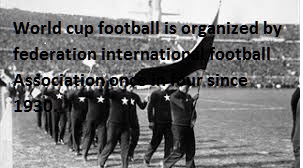Rudolf Diesel-The Inventor of the Diesel engine

Rudolf Christian Karl Diesel (18 March 1858 – 29 September 1913) was a German inventor and mechanical engineer, famous for the invention of the diesel engine
Rudolf Diesel was born in Paris in 1858. His parents were Bavarian immigrants, and the family was deported to England at the outbreak of the Franco-German war.
Eventually, Rudolf Diesel went to Germany to study at Munich Polytechnic, where he studied engineering.
After graduation he was employed as a refrigerator engineer in Paris from 1880.
In 1893, he published a paper describing an engine with combustion within a cylinder, the internal combustion engine.
In 1898, Rudolf Diesel was granted patent for an "internal combustion engine."
The diesel engines of today are refined and improved versions of Rudolf Diesel's original concept.
They are often used in submarines, ships, locomotives, and large trucks and in electric generating plants.
Diesel disappeared from the deck of the mail steamer Dresden en route to London and was assumed to have drowned.
how diesel engine work ?
A
A four-stroke engine is an internal combustion engine. The piston rotates in the cylinder to complete the strokes (intake, compression, power, and exhaust) that complete one operating cycle. An injector injects diesel into the combustion chamber above the piston , the piston compress the air at constant volume .
When the diesel fuel is injected they burn the diesel with hot, compressed air, an atomized form of the fuel is made to contact with high temperature and high pressure air. The temperature of the air inside the combustion chamber rises to above 400°c to 800°c .
The piston make two complete cycle in the cylinder to complete one operating cycle. A four-stroke cycle engine completes one operating cycle, including intake, compression, ignition, power, and exhaust
Working
Air is drawn into the cylinder through the open air inlet valve as the piston moves down.
Compression Stroke:
The inlet valve closes, the piston moves up, and compresses the air mixture, heating it up. Fuel is injected into the hot gas through the fuel injection valve and spontaneously ignites, no sparking plug is needed .
Power Stroke:
As air fuel mixture ignites and burns, it pushes down the piston down, driving the crankshaft.
Exhaust Stroke:
The outlet valve on the left opens to let out the exhaust gases, pushed out by the returning piston.
Construction

The walls of a diesel engine block are thicker than a block designed for a petrol engine, and they have more bracing webs to provide extra strength and to absorb stresses .Pistons, connecting rods, crankshafts and bearing caps have to be made stronger than their petrol engine. The cylinder head design has to be very different because of the fuel injectors because of the shape of its combustion and swirl chambers.
Block
The diesel engine starts with a block, contain all the parts of internal combustion process. There is an open space in the block for each cylinder, where the combustion process takes place.
Crankshaft
Crankshaft converts the linear motion created by combustion into rotational motion.
Connecting Rods
Connecting Rods connect the crankshaft to the cylinder and carry the force of the combustion to it.
Pistons
Each connecting rod attaches to a piston at the top. The pistons is the bottom of the combustion chamber and move up and down in the cylinder.
Cylinder Head
At the top of the block is the cylinder head. This closes the top of the combustion cylinder, the head can be one unit covering all the.
Valves
The engine needs valves to allow the combustion gases to flow out and fresh air to flow in during the combustion process. There are two valves for exhaust and two for intake air on every cylinder.
Fuel Injectors
Fuel injectors spray fuel into the top of the cylinder in very precise patterns with highly controlled timing.
Camshaft
Some engines still work on mechanical system to open and close the valves, and some still use mechanical actuation for the fuel injection. The camshaft’s revolutions control the timing of each event through the geometry and placement of the lobes on the shaft.
You may also like :





















